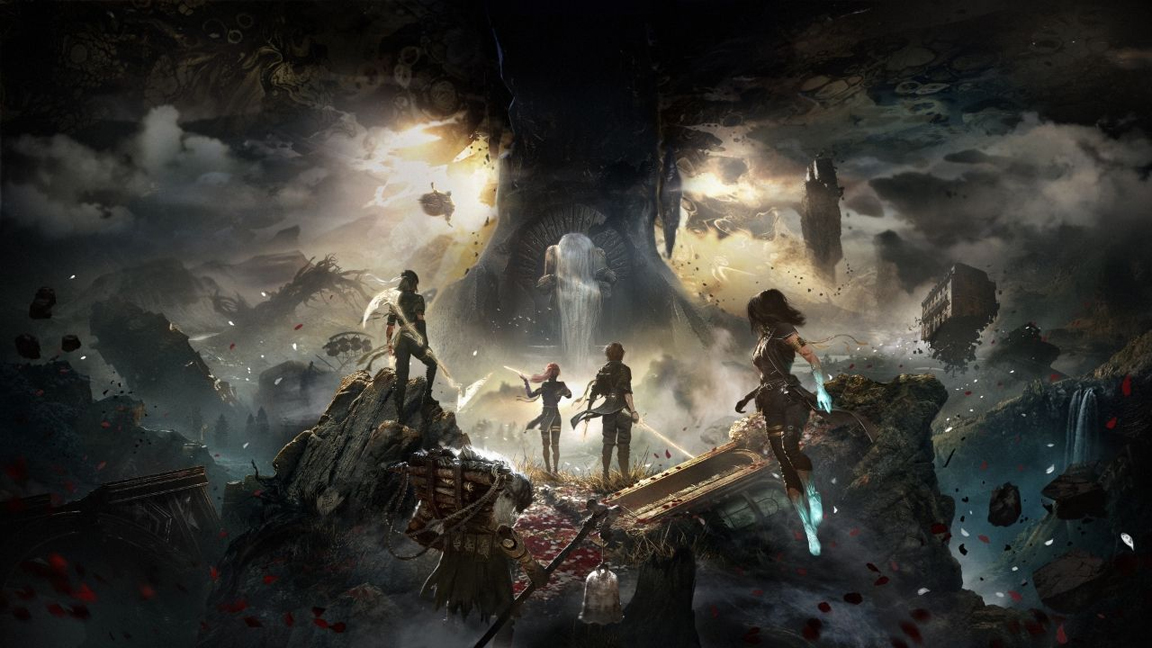

Publisher Kepler Interactive
Developer Sandfall Interactive
Format PS5 (reviewed), Xbox Series X/S, PC
Platform Unreal Engine 5
Release date 24 April 2025
Oh, to have been an artist on this game. Clair Obscur: Expedition 33 gives a strong impression that the art team was given absolute free rein during its five years of development, and the end product was subsequently built around whatever outlandish visions they came up with, logic be damned. An island made of faces? Sure. A fish-filled coral reef inexplicably set in the open air? Go on, knock yourself out.
The result is a turn-based RPG that sets itself apart from the pack, even from the flights of imagination seen in series like Final Fantasy, which is probably its closest relative.
It helps, perhaps, that Clair Obscur was made by just a small team of around 30 people: it’s easier to fly in the face of convention when there’s just a handful of folks in charge of steering.
Yet thanks to Unreal Engine 5, Clair Obscur looks like a game made by hundreds of developers, not dozens. It really is quite astonishing to see what French studio Sandfall Interactive has achieved with such a small team, and shows how the power of tools like Metahuman and Lumen can allow smaller games to compete visually with blockbusters.
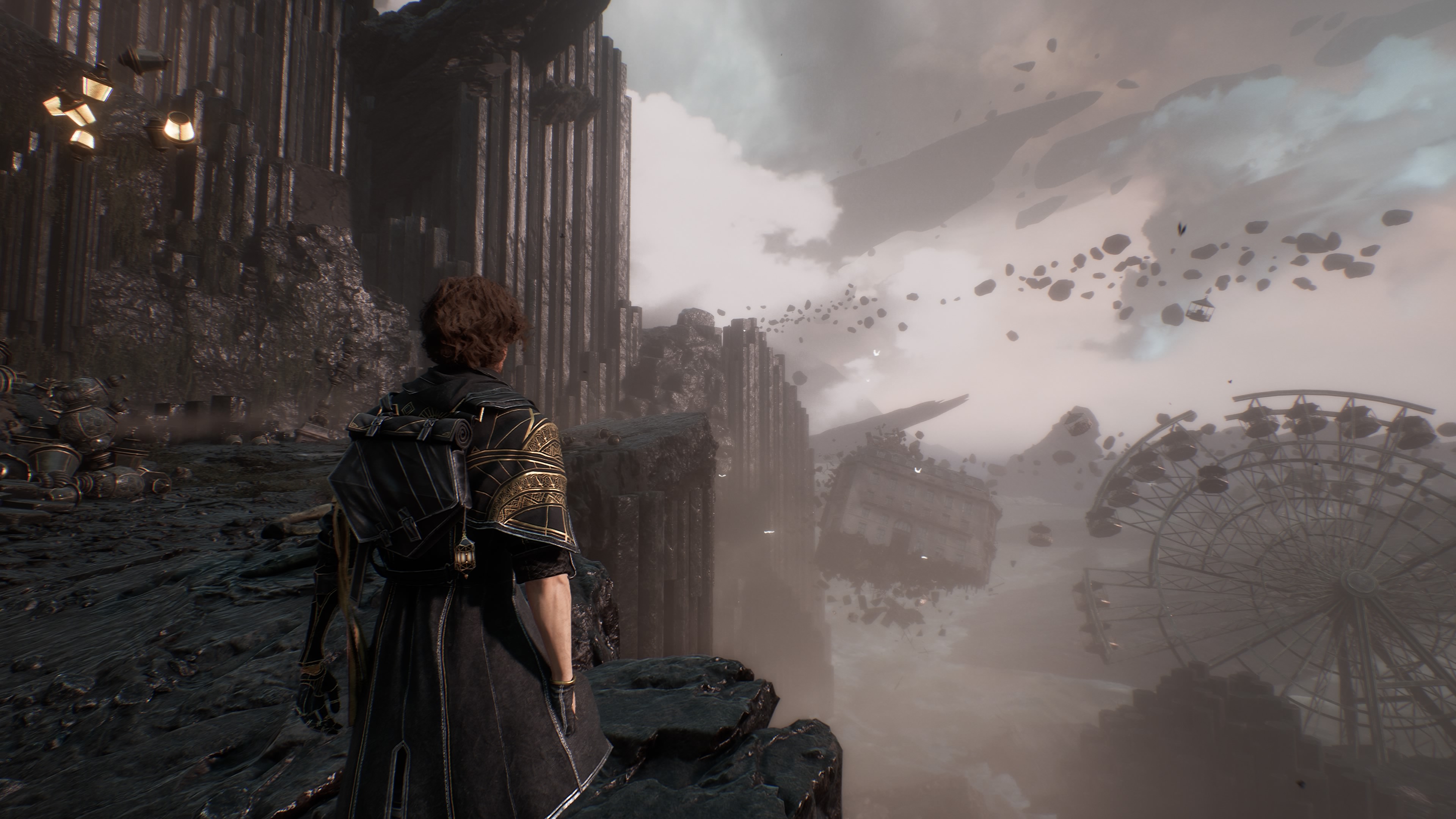
Art tools in the right hands
Of course, tools like these are only as good as the people using them, and there’s a strong artistic vision here, where the world is both beautiful and unsettling at the same time.
It’s most reminiscent, perhaps, of the 1995 film The City of Lost Children by French directors Marc Caro and Jean-Pierre Jeunet, and there’s a certain Gallic flair throughout Clair Obscur, not least in the way the English script is peppered with exclamations of ‘merde’ and ‘putain’.
The whole thing has a surreal, dream-like feel, a world where anything is possible and nothing is expected.
Enemies with faces made of creepily flexing hands simultaneously provoke both horror and fascination, and the sheer range of weird and wonderful adversaries you encounter over the 30 hours or so it will take to finish the story is simply wild.
The costume design, too, is next-level stuff, with the main characters donning delightful, asymmetrical uniforms that feel like Final Fantasy by way of the Paris catwalks, and there are many more fantastical outfits to discover later on.
The term ‘clair obscur’ is another word for ‘chiaroscuro’ – the painting technique that involves strong contrasts between light and dark – and it’s the perfect metaphor for the game’s plot.
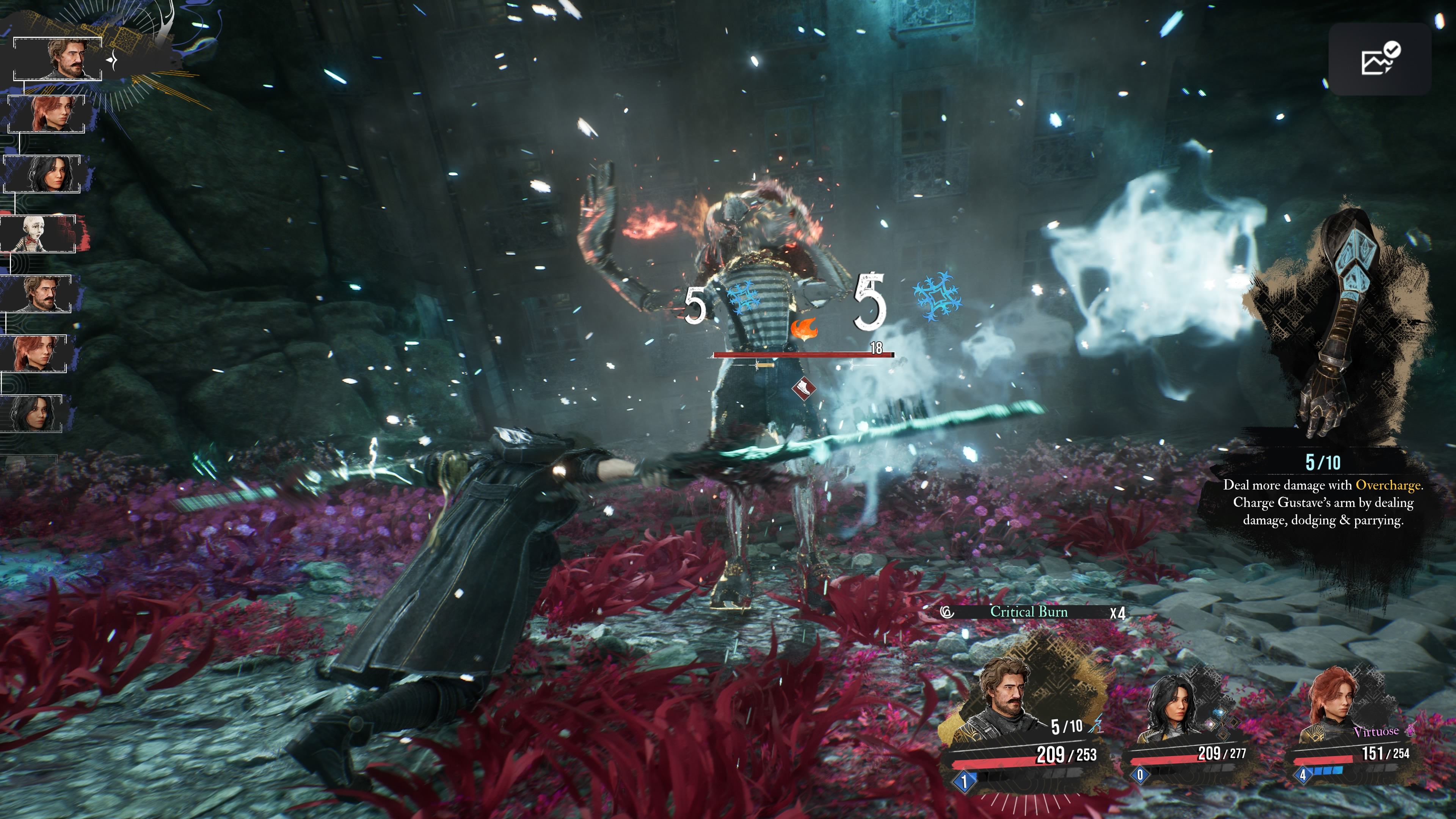
At the beginning of the game, the citizens of Lumiere – a shattered, twisted facsimile of Belle Epoque Paris – gather to watch a mysterious being called the Paintress erasing the number 34 from a vast monolith in the far distance. She paints the number 33: and instantly, anyone aged 33 is turned into dust.
The following day, Expedition 33 sets sail for The Continent with the aim of reaching the monolith and stopping the Paintress, although they have little hope in succeeding, as dozens of earlier expeditions have failed.
Indeed, the expedition soon turns into a disaster, as an army of Paintress-created Nevrons led by a mysterious white-haired man brutally wipe out all but a handful of the expeditioners.
These opening hours are some of the bleakest I can remember in a video game, shot through with death and despair, but this is immediately followed by a much more light-hearted sequence in which we meet the Gestrals, a delightfully odd race of fighting-obsessed, paintbrush-headed, mannequin-like beings.
This switch between despair and levity, from dread to wonder, continues throughout, and there are some dramatic twists on the journey – not least around a third of the way in, with a particularly memorable, earth-shattering rug pull that I shan’t spoil for you here.
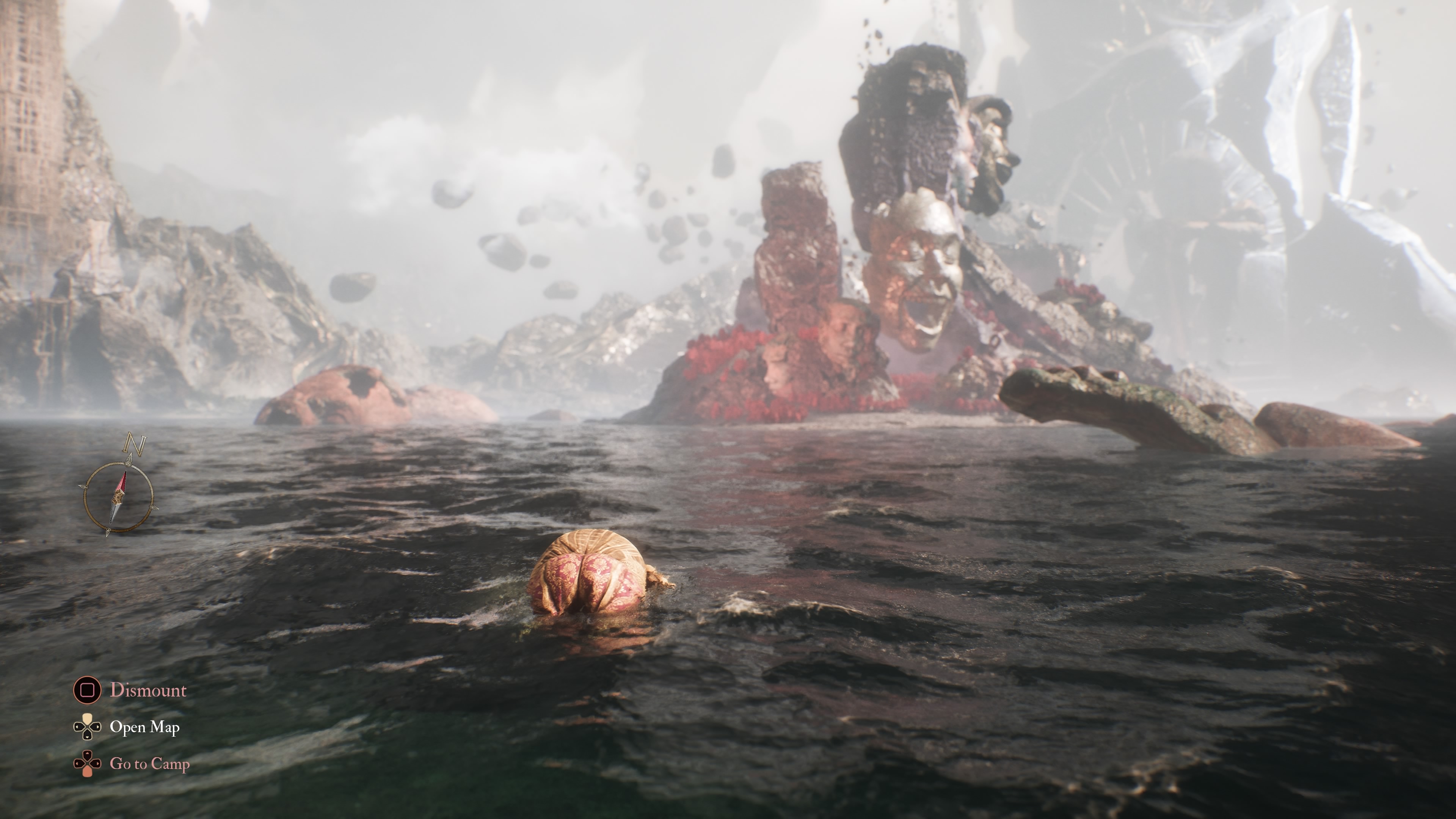
Clair Obscur: Expedition 33 relies on mystery
One of Clair Obscur’s greatest strengths is its unwillingness to explain. Whereas many games trip over themselves to bombard the player with lore, here the developers show admirable restraint, holding back answers or not providing them at all, instead inviting the player to fill in the blanks.
This is an ideal way to keep you feeling invested in the plot, to keep you driving forward in search of answers to questions like how magic works in this world, and what mysterious event caused Lumiere to be lifted up and thrown into the sea.
There’s a similar deliberate lack of information in the levels themselves, in the form of the absence of a map. There’s a map of the overworld, in which the not-to-scale characters jog from area to area, but once you enter a level, no such guidance is provided.
This can be disorienting at first, like leaving home without your smartphone, but it turns out to be an inspired decision. Without a distracting mini-map in the corner of your screen, you’re forced to pay more attention to your surroundings, to orient yourself by landmarks, like in the old days before Google Maps.
In truth, the game's world is not especially difficult to navigate, since each level is fairly small and mostly linear, albeit with the odd offshoot path leading to a collectible or two.
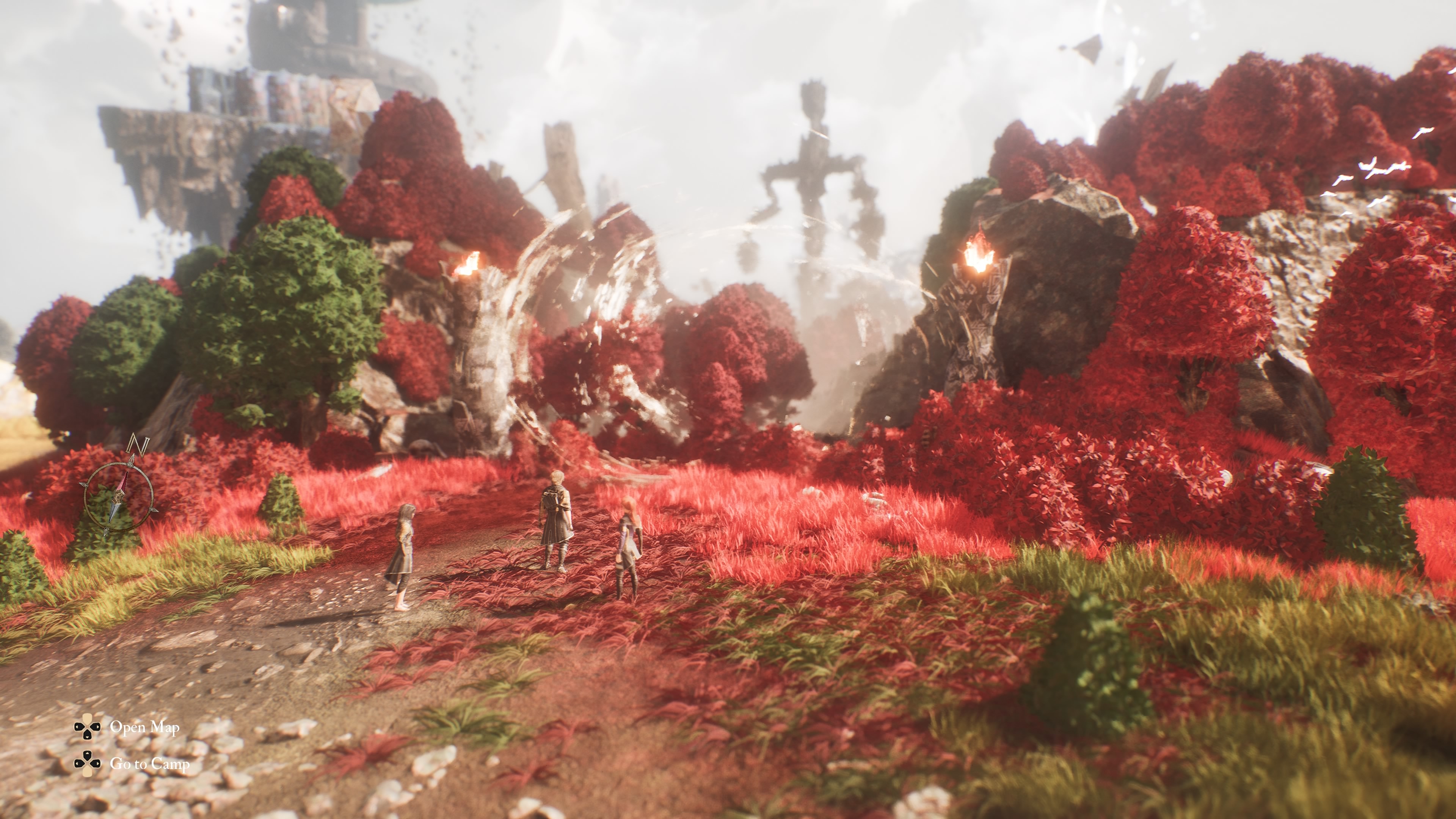
The thrumming machine at the heart of Clair Obscur’s painterly world is its turn-based combat system, which is a little like the active turn-based battles of the Paper Mario series, if they were taken to extremes.
Each character in your party of three has a basic attack that generates action points, then those action points can be used to fire up ‘skills’, which are generally more powerful attacks or healing spells.
But the twist comes on the enemy’s turn, since with sufficiently good timing, you can dodge the enemy’s attacks with the tap of a button. Even better, you can try to parry them to generate action points and launch a devastating counter-attack, although the timing window is much tighter for parries than for dodges.
This results in some electrifying battles, more like Street Fighter or Sekiro: Shadows Die Twice than typical turn-based fare, and learning how to effectively parry or dodge is essential on the default ‘Expeditioner’ difficulty level, since more powerful enemies can take out your party in a handful of hits.
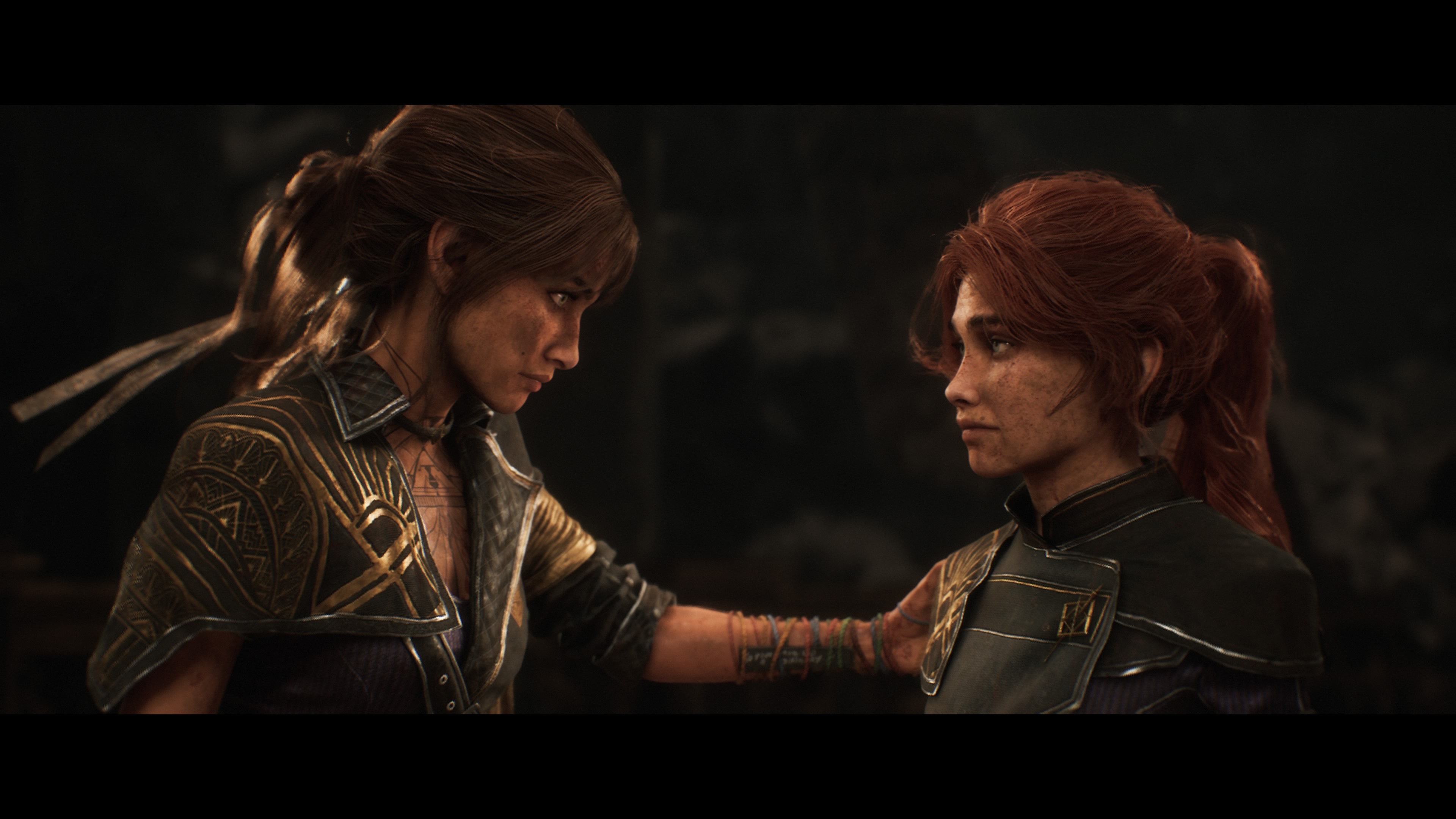
The Souls-like influence
In fact, there’s a clear Souls-like influence here, especially in the way you have only limited opportunities to heal your team between battles. Reaching one of the handful of expedition flags on each level is a relief, since they provide the rare chance to rest and restock your healing elixirs, although at the cost of causing previously defeated enemies to respawn.
The combat system goes incredibly deep: there are dozens of ‘Pictos’ to find, three of which can be equipped by each character to boost certain stats and provide unique perks, and after four battles these Pictos become ‘Luminas’ that allow other characters to equip the same perks.
You can also level up the individual abilities of each character – might, defence, speed, and so on – and different weapons are attuned to different abilities, as well as having different perks and elements of their own.
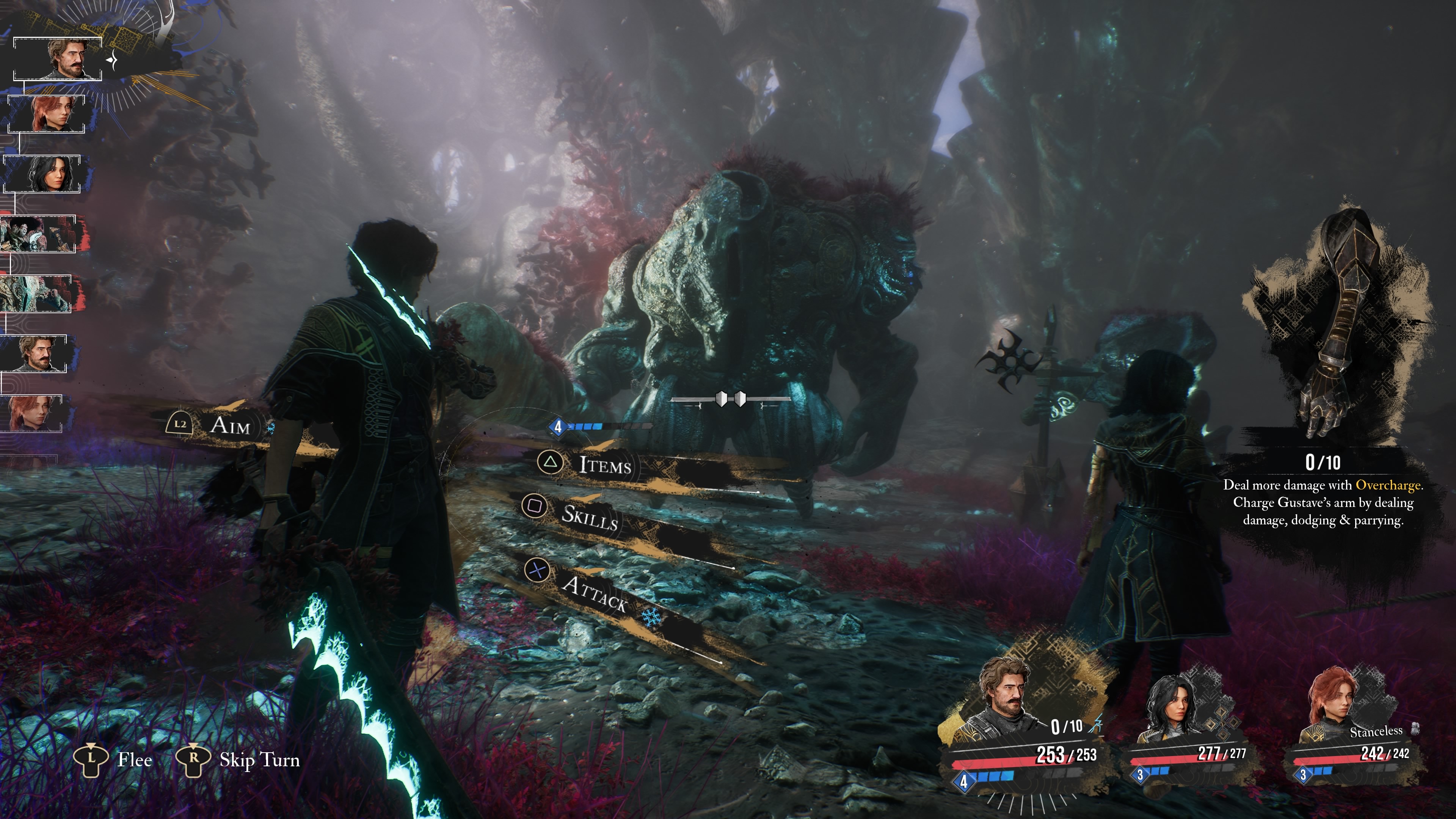
Plus, each character has a completely unique combat system. Sciel, for example, fights with magical playing cards that can be stacked on individual enemies, than later consumed in a devastating attack. Monoco, meanwhile, can transform into previously defeated enemies.
You’ll need to tinker carefully with Pictos and skills in order to devise a suitably efficient engine with which to beat some of the more powerful enemies in the game.
In fact, some of the bosses you encounter are downright evil, often committing the heinous crime of healing halfway through a battle. One particularly nasty one around halfway through not only heals, but also adds a shield to its health bar for each hit on your party, as well as regularly applying Exhaust, stopping your characters from accruing action points.
Challenging but beautifully weird
In short, this is a game that can get incredibly tough, especially when enemies start doling out combo attacks that require you to dodge or parry five, six or even seven times in a row.
Luckily, you can change the difficulty at any point, although even knocking it down to ‘Story’ still provides a challenge on certain fights. But it’s worth rising to that challenge, since Clair Obscur is not only a feast for the eyes, it’s a brilliantly weird and unique title that feels like nothing else out there.







